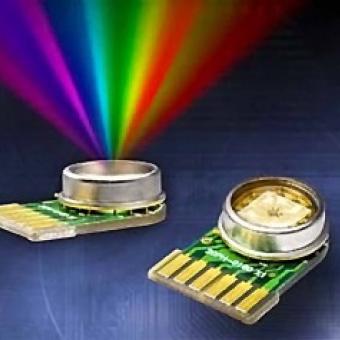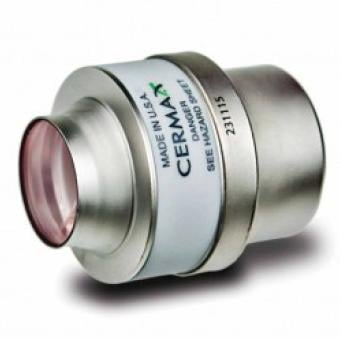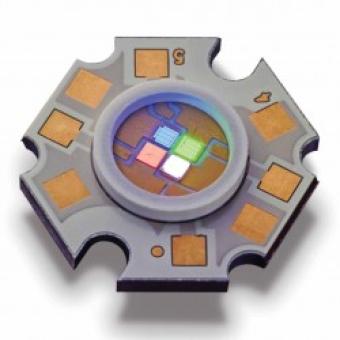Solar Simulators: A complete test system

Requirements of solar simulators
High-volume applications such as photovoltaics, rely heavily on solar simulators for R&D, test, and manufacturing. By taking a system-level view, it becomes possible to design flexible and configurable simulators that minimize size, power consumption, and operating costs while maximizing performance and flexibility.
More than just a light source, a solar simulator is a complete test system that includes reflectors, lenses, shutters, power supplies and control electronics, as well as a high-intensity light source that simulates the solar spectrum. Engineering a solar simulator requires custom design and component options from a high-level perspective that meet the requirements of its end use in a manufacturing or testing environment.
Designers of solar simulation systems must manage a number of subsystems including:
- Light sources – As the fundamental component of a solar simulator, the light source must be configured to emit light in a spectral profile that mimics the ground-level spectrum of the sun in a wide variety of terrestrial circumstances. Ideally, light sources must also have a means to control output power and spectrum, as well as adjust for the effects of aging, while minimizing the inconvenience and cost of replacement. Xenon lamps and LEDs are most commonly used as light sources in solar simulators.
- Reflectors, lenses and filters – An elliptical or parabolic reflector is used to collect and collimate output from the light source. Most off-the-shelf light sources, whether xenon or LED, do not incorporate a reflector. An external reflector adds bulk to the system and must be replaced and realigned upon replacement of the light source. Optical filters must also be added in many xenon-based systems to match the output from the lamp to the solar spectrum more precisely. In LED-based systems, a series of lenses or reflectors must be designed to combine light from up to 20 different LED wavelengths to match the solar spectrum and uniformly distribute the light across the solar panel or test subject.
- Power supplies and control systems – Power supplies drive the light sources in a solar simulator and play a critical role in the cost, size, and reliability of a system. Efficient integration of a power supply allows for a smaller overall size of a solar simulator. Detectors and control electronics monitor the optical power and spectrum of a solar simulator to optimize for effects of aging and can adjust the solar spectral profile for a wide range of geographic locations, altitudes, humidity levels, and times of day.
Integration and design of solar simulator systems
While solar simulators can be assembled from scratch by sourcing components and subsystems from multiple suppliers, this approach can be time consuming and makes it difficult to optimize costs, size, and performance of the final system. There are clear advantages in collaborating with companies that have extensive experience and technical expertise in providing a range of standard and custom components required in solar simulation. These range from subassemblies and modules, to turnkey system-level solutions which incorporate best-in-class components to optimize system performance, simplify supply chain logistics and ultimately reduce time to market. Excelitas’ Xenon and LED solutions are typically delivered with integrated optics to ensure precise optical coupling, optimized lighting performance and reduced adjustment requirements during operation.

Light sources, xenon lamps
Of all the noble gases, xenon provides a flash lamp spectrum closest to that of the solar spectrum, especially in the visible portion from 400 to 700 nm. Xenon short-arc lamps that provide power levels of 150W to 1600W that are ideal for solar simulators, especially for large-area photovoltaics that require higher overall power. Unlike most xenon sources, Cermax lamps come with an internal elliptic or parabolic reflector to collimate the output of the arc.
This enables a small overall size for the lamp and optics. An integrated reflector also eliminates the need to realign the lamp to an external reflector when the light source is replaced, which reduces the costs and overall downtime.
Diamond-turned, metal-body xenon lamps that provide a more precise reflector surface, require less cooling, and offer a smaller overall footprint. These high-performance lamps offer longer lifetime and reduced operating cost.

Light sources, light emitting diodes
Also commonly used for solar simulation are Light Emitting Diodes (LED). LEDs have become a viable alternative for solar simulation because they provide exacting wavelength selection and programmability. While a single LED emits light over a narrow wavelength range of 10-40 nm, a series of LEDs from the ultraviolet to the infrared can be neatly combined to reproduce the entire solar spectrum.
By controlling the drive current to separate diodes, an LED-based solar simulator can be easily configured to match the ground-level solar spectrum in a variety of circumstances such as geographical location, elevation, season, weather conditions, and time of day.
LEDs can also be continually monitored and adjusted to maintain a constant output power and spectrum over time as each diode ages. LED-based solar simulators also have higher overall wall-plug efficiency and longer lifetimes, up to 50,000 hours. This results in lower operating costs and minimize downtime.
LED-based solar simulators offer three key advantages when testing photovoltaics:
- The spectral configurability and long lifetime of LEDs offer consistent and accurate efficiency measurements throughout extended life time of LED systems, reducing operating costs.
- LED systems are able to offer longer exposure times, which is required for high-efficiency solar panels. This allows solar panel manufacturers to improve efficiency classification and yields.
- Defects and hot spots can be detected because LED systems offer the ability to select specific wavelengths, thus improving quality and reducing loss.
A full range of LED wavelengths is available along with optical, thermal, electrical and mechanical design to meet special application requirements of solar simulation for high-performance uses.
Optics, power supplies and control systems
As previously mentioned, there are various optical elements (beyond the light source), that are essential to designing a fully integrated solar simulator... namely optics and power supplies.
Optical elements combined with optomechanical design and integration expertise can minimize the footprint and maximize the performance of solar simulators. The right xenon-based light sources incorporate reflectors to collect the light from the lamp, integrating lenses and diffusers to collimate the light and deliver it to the test subject, and custom filters to configure the spectrum as needed to most closely simulate solar light. LED-based systems need to incorporate lenses and/or reflectors to uniformly mix the light from each LED wavelength, collimate it and optimally distribute the light to the test subject.
Designing and integrating a power supply into a solar simulator offers the potential for saving space and reducing overall system cost. Fully integrated power supply solutions exist for a wide range of solar simulator configurations. Power supplies for Xe-based systems achieve power up to 1600W. For LED-based systems, power supplies should be integrated with monitoring and control electronics to compensate for LED aging and to select individual wavelengths for improved testing.
Building blocks of optimized systems
As OEMs demand a new generation of solar simulators with rapid configurability, high performance, and lower operating costs, they look to providers who can not only supply, but also integrate the building blocks of solar simulators and integrate them into optimized systems.